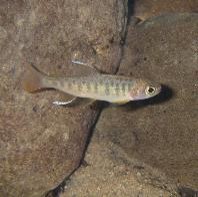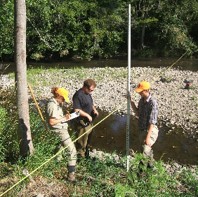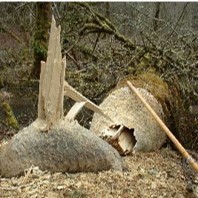Oregon Plan Habitat Surveys
Welcome to the Oregon Plan Habitat Surveys. Our primary mission is to comprehensively evaluate all streams located within the habitat range of coho salmon (Oncorhynchus kisutch). At the core of the Oregon Plan is the imperative to understand the present state of salmon habitats and identify trends in their conditions.
To fulfill this mission, we have established a long-term monitoring program that coordinates various key activities. These activities include stream habitat surveys, juvenile snorkeling inventories, inventories of beaver habitats, freshwater mussels, and barrier assessments. These efforts collectively provide us with the insights needed to gauge the health of salmon habitats and discern any trends in their condition.
Our stream surveys are conducted during the summer season and are specifically designed to assess the status and trends in stream habitat at the monitoring area scale. Each field survey is based on a randomly selected Generalized Random Tessellation Stratified (GRTS) point, a fundamental aspect of our approach. These random habitat surveys aim to provide a representative snapshot of the stream conditions corresponding to the initially chosen sampling design.
Through the implementation of this comprehensive strategy, we aim to contribute significantly to the protection and conservation of coho salmon habitats within Oregon. Our commitment to scientifically sound assessment methods ensures that we can effectively monitor changes, identify challenges, and make informed decisions to preserve these vital ecosystems for the benefit of future generations.
Project Contacts:
Matt Strickland
Ron Constable

Habitat Condition
The Oregon Plan was initiated in response to the petition to list coho salmon (Oncorhynchus kisutch) as threatened under the Endangered Species Act (ESA) in 1997. Monitoring programs implemented under the Oregon Plan for Salmon and Watersheds in 1998 were designed to assess the status and trends in fish populations and aquatic habitat in Oregon’s coastal basins. Through coordinated surveys, we can evaluate freshwater habitat, fish distribution, and abundance of juvenile and adult coho salmon and steelhead trout. Stream habitat and juvenile salmonid snorkel surveys provide the broadest geographic scope of inference and tie to other program components – basin or census habitat surveys, surveys at habitat restoration sites, adult coho salmon surveys, and ODFW life cycle watersheds. While one of the primary intentions of the habitat surveys is to describe instream conditions for anadromous fish, a broad understanding of stream conditions is also achieved.

Habitat Capacity and Quality
We use the Habitat Limiting Factors Model (HLFM) to evaluate summer and winter habitat capacity with respect to the production potential of juvenile coho salmon. Summer habitat capacity is a function of the amount of total pool habitat, while winter habitat capacity is dependent on beaver-influenced habitat, large wood, and off-channel pool area. We use the HabRate model to rate the quality of individual stream reaches as poor, fair, or good based on attributes relating to stream substrate, habitat unit type, cover, and structure (i.e., large wood, undercut banks), and gradient. These are used to evaluate habitat requirements for discrete early life history stages of salmonids (i.e., spawning, egg survival, emergence, summer rearing, and winter rearing).

ABCs - Amphibians, Beavers, and Crayfish
Our surveys aren’t just about counting sticks and rocks; we also collect and store observational data that aren’t associated with fish or fish habitat. Surveyors are trained to identify amphibians by species, beaver activity, and non-native crayfish. These observations have been used to expand the distribution of individual species, describe non-native encroachment, and influence management decisions.



